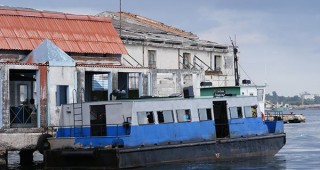Although considered by many the oldest church in Havana, a research by historian Pedro A. Herrera has proved otherwise. The original building, which was built as a hermitage in 1638 for freed slaves and which in 1661 had become the second parish church of the city, no longer exists. It was successively repaired, remodeled and rebuilt–the tower, presbytery vault, new walls and additional nave were all built from 1707 to 1760. In later years, the north wall was rebuilt and its façade remodeled. Therefore, the church we see today is more 18th century than 17th, although it has preserved its original features.
It is precisely its simple structure that makes the building interesting, as well as its clay saddle roof, murals, stained glass and a wooden ceiling. Other interesting details include the crypts discovered in 1953; the tomb of Bishop Gerónimo Valdés, discovered in 1936; and the fact that in 1773, the church was declared as the only one in Havana that could give asylum to people wanted by the authorities.






 Modern
Modern



